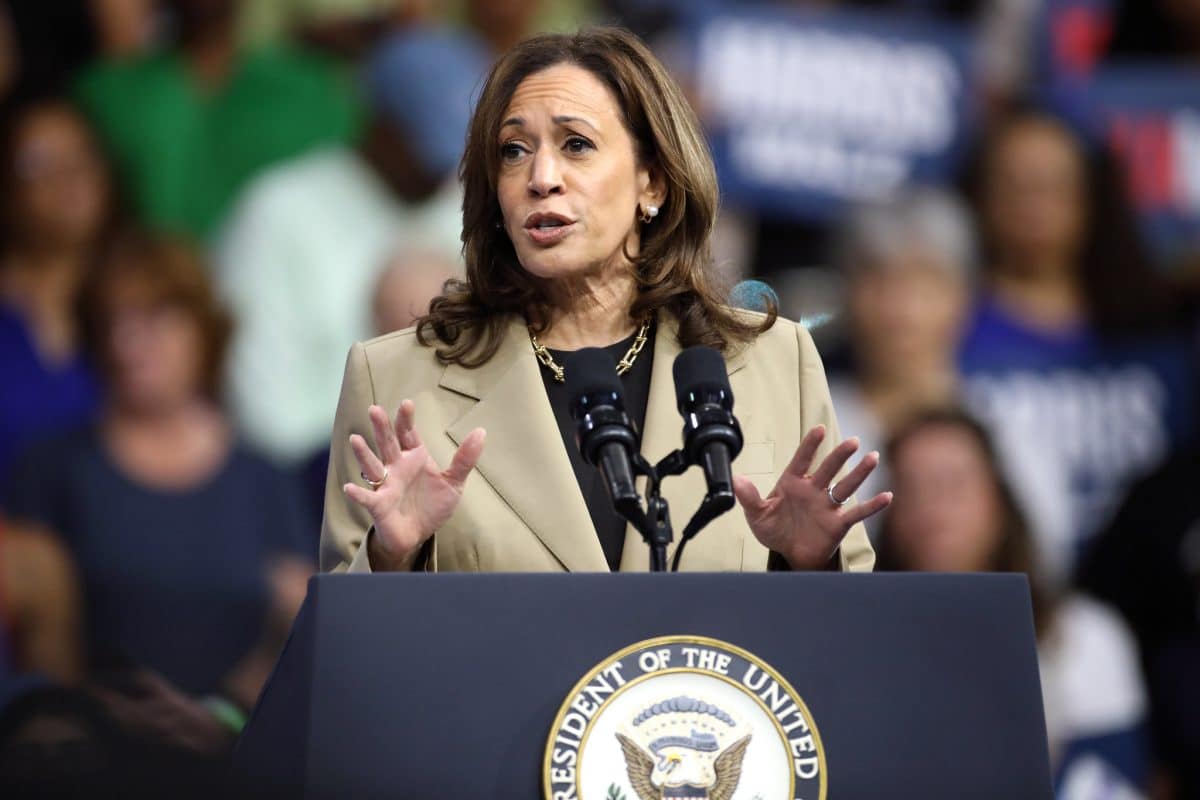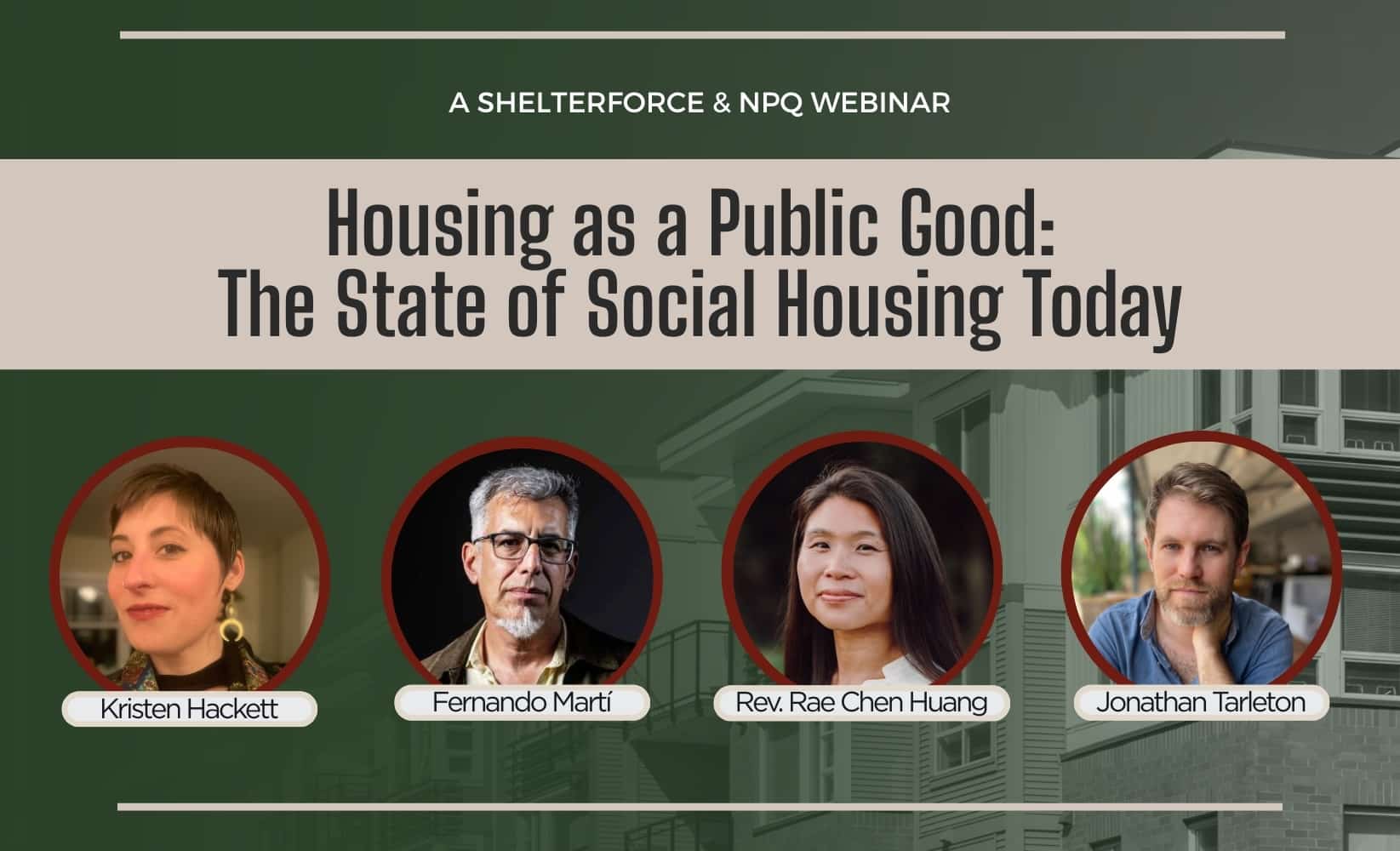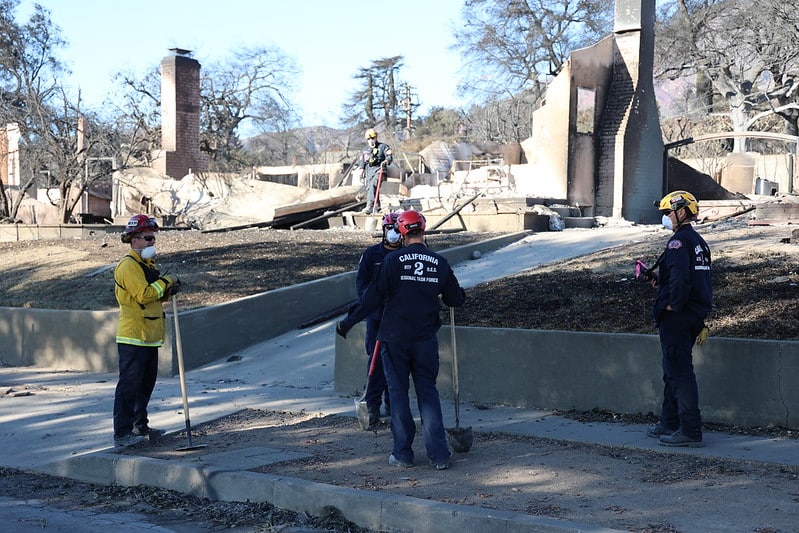Once dismissed as a “third-rail political issue,” housing is finally being prioritized as a platform issue in the 2024 presidential election. That is in no small part because the housing crisis, decades in the making, has reached a boiling point.
Today the U.S. has a housing shortfall of an estimated 4 million to 7 million homes. A record-high number of renter households—about 22 million—spend more of than 30 percent of their income on housing, leaving less money available for things like groceries, health care, and childcare (costs that have also dramatically risen over the years). In fact, young voters have been hit so hard by inflation and other economic challenges that many are being forced to abandon the dream of homeownership altogether.
Over the last few months, former President Donald Trump and Vice President Kamala Harris, the Republican and Democratic candidates for the presidency, have rightly taken note. “Housing is very top-of-mind for both of these candidates,” says Sarah Saadian, senior vice president of public policy and field organizing for the National Low Income Housing Coalition. “In all of these swing states, the voters that they need are talking about how high housing costs are impacting them.”
Jodi Eleazer-Risper of Right to the City, a national, grassroots alliance that fights against gentrification and displacement, agrees. “They’re reading the room and beginning to address the realities for millions, which is something we’re really seeing for the first time.”
Economists have pointed to several principal causes of the housing crisis, including the demand for housing outpacing supply, an aging housing stock in desperate need of renovation and repair, market-rate housing being out of reach for low-income households, and the “unusual” combination of high housing prices and high mortgage interest rates that is locking renters out of homeownership. A comprehensive housing plan, they say, would require a sober examination of all these challenges holistically.
So how well do the candidates’ housing proposals address the crisis? Shelterforce recently spoke with housing advocates who shared their optimism and criticism of the plans, or lack thereof.
Lowering Housing Costs
In September, during the only debate between the two presidential candidates, Harris addressed the housing crisis within the first minute of her opening remarks, saying, “We know that we have a shortage of homes and housing, and the cost of housing is too expensive for far too many people.”
At that point, the Harris campaign had already released a housing proposal that prioritized increasing the supply of housing to lower the costs of renting and homeownership. Following the debate, the campaign released a more detailed plan in an economic policy book, and committed to building 3 million new housing units—both to rent and to buy—over the next four years to make up for a portion of the housing shortfall. The plan details three key avenues to facilitate that construction: expanding the Low-Income Housing Tax Credit (usually referred to as LIHTC, pronounced “lie-tech”) to build more than 1.2 million new affordable rental homes, a new tax credit to build or rehabilitate more than 400,000 owner-occupied homes in low-income communities, and a $40 billion innovation fund to support the design and construction of affordable rental and housing solutions.
“You rarely see this amount of detail and specificity,” says David Dworkin, president and CEO of the National Housing Conference, a coalition of affordable housing stakeholders. Dworkin was especially pleased to see Harris’s plan endorse two bills—the Neighborhood Homes Investment Act, which would create that new tax credit, and the Affordable Housing Credit Improvement Act, which would expand and strengthen LIHTC. “It identifies individual pieces of legislation—that have bipartisan support and are very likely to pass—and it’s a serious, thoughtful approach.”
Meanwhile, to support first-time home buyers’ access to homeownership in the immediate future, the Harris campaign proposed up to $25,000 in downpayment assistance, which it says will reach more than 4 million first-time buyers over 4 years. Today, home buyers in nearly half of U.S. states must have a six-figure household income to afford a typical home in their state—and that’s if they’re planning to get a mortgage. (That means earning $197,057 a year in California, $185,829 in Hawaii, $114,771 in Florida, $114,386 in Idaho, and $100,629 in Texas).
“I’m very optimistic that the outline she’s created could make a real difference,” says Dworkin.
Other housing advocates are less optimistic.
Saadian of the National Low Income Housing Coalition says the Harris plan is more concrete than Trump’s, but it doesn’t go far enough to address the challenge of access for low-income households.
[RELATED ARTICLE: Where the Harris, Trump Campaigns Stand on Housing]
“A lot of the solutions that she’s been focused on are [for] first-time homeowners and renters who can afford market-rate rents,” she says. “Great. Love it. But that’s not going to create housing that’s affordable to people who are paying 50, 60, 70 percent of their income on rent. We want to see her calling for greater investments to build housing supply that’s affordable to people with the lowest incomes.” This includes preserving public housing and investing in the Housing Trust Fund, a federal program that provides grants to states to produce and preserve affordable housing for such households with very low and extremely-low incomes, Saadian says.
Shamus Roller, executive director of the National Housing Law Project, agrees with Saadian’s critique. “That’s a pretty critical piece of this,” Rollers says. “One of the things I would say that is kind of lacking from the Harris campaign is any proposal around new spending for affordable housing development. I’d love to see more of that.”
But Dworkin argued that housing supply is needed at all price points. “We need it all. We need affordable housing for middle-income buyers and renters, and we need it for extremely low income, and everyone in between,” he says. “There’s just too much need everywhere.”
Opening Pathways to Construction
Housing advocates do agree that reducing regulations to support better zoning practices will help build more homes—and, by extension, lower housing costs.
Here, the front-running presidential campaigns have found rare common ground. During the vice presidential debate early October, Harris’ running mate, Democratic nominee Tim Walz, and Republican nominee JD Vance, agreed with one another on deregulation of zoning and permitting bureaucracy as a housing supply solution.
“All of those things, in the long run, end up saving our money. And that’s the thing that I think we should be able to find some common ground in,” Walz said, to which Vance concurred, “I actually agree. We should get out of this idea of housing as a commodity.”
But Vance said little more on housing after that before turning to Trump’s preferred issue: immigration. “You’ve got housing that is totally unaffordable, because we have brought in millions of illegal immigrants to compete with Americans for scarce homes,” doubling down on rhetoric from Trump and the GOP that insists that “Democrats’ open border policies” are to blame for driving up the cost of housing, education, and health care.
Low-income renters are the only income group for whom there’s an absolute shortage of housing supply, but neither of the campaigns are really talking about filling housing supply at that price point.”
Sarah Saadian, National Low Income Housing Coalition
The Trump campaign actually offers little else beyond its core promise of “defeating Biden’s migrant invasion,” including its approach to housing. “Deporting immigrants has been the primary way in which he and Sen. Vance have talked about this issue,” says Roller. “It’s anti-immigrant and racist sentiment, and not really a [housing] plan.”
Trump’s campaign, which defers to the GOP platform for its policies, only offers housing advocates—and voters—a single sentence on its approach to addressing housing affordability: “To help new home buyers, Republicans will reduce mortgage rates by slashing inflation, open limited portions of federal lands to allow for new home construction, promote homeownership through Tax Incentives and support for first-time buyers, and cut unnecessary Regulations that raise housing costs.”
And while the former president has regularly called for regulatory reform along the campaign trail, particularly for zoning, to bring down housing costs, his campaign promise of ending President Biden’s “full scale war on the suburbs”—in which he claims that Democrats will destroy the suburbs by “building giant multifamily apartment complexes in the suburbs, and force communities to pay for low-income housing developments”—runs counter to that aim.
“He sort of talks out of both sides of his mouth about the zoning changes, because he talks about reducing regulations on developers—which we support better zoning practices—but he also says he’s [going to] protect the suburbs from low-income housing being built in their neighborhood,” says Saadian. “You can’t have both at the same time.”
“We have to recognize that if you don’t want affordable housing in your backyard, you’re going to end up with homeless people in your front yard. They are inextricably linked,” says Dworkin. “We are not talking about building big, low-income apartment buildings in the middle of a residential neighborhood. We’re talking about building affordable housing in communities that desperately need it.”
And the need for genuinely affordable housing is great.
“Low-income renters are the only income group for whom there’s an absolute shortage of housing supply, but neither of the campaigns are really talking about filling housing supply at that price point,” says Saadian. “Until we address that shortage, we’re going to continue to see a housing crisis.”
Limiting Rent Increases
Nowhere in the Harris campaign’s economic policy book is rent stabilization or rent control mentioned, but Harris has embraced rent caps in the recent past, pledging at a rally in Atlanta to “cap unfair rent increases” and supporting Biden’s proposed rent cap at 5 percent per year on landlords with 50 or more rental units.
Housing advocates took note.
“You see some form of rent controls in a lot of Democratic plans, and the reality is, they don’t work,” says Dworkin. “Price controls are very hard to implement, and they almost always result in both the reduction in supply and in a significant rebound effect when the price controls are lifted.”

The National Housing Conference has instead lauded the campaign’s targeting of institutional investors “buying up and marking up homes in bulk” by endorsing the “Stop Predatory Investing Act,” which removes key tax benefits for major private investors with 50 or more single-family rental homes.
But Eleazer-Risper of the Right to the City Alliance says that voters they work with want rent stabilization regardless, citing the alliance’s recent poll, conducted with the Center for Popular Democracy and HIT Strategies, in which 70 percent of polled registered voters across five swing states said they are more likely to vote for someone who supports rent stabilization policies.
“We have seen locally what rent stabilization has meant for our folks, and we know that folks are fighting for it because they have seen the effectiveness of it,” she says. “That is what we hear from voters: Renters want to be protected just like homeowners are, and they want to feel prioritized.”
Another strategy that the Harris campaign identified to safeguard tenants is cracking down on companies that use price-fixing tools to “drive significant rent increases” and “distort the market” by endorsing the “Preventing the Algorithmic Facilitation of Rental Housing Cartels Act.” If passed, the bill would prevent price coordination between landlords and their use of price-setting algorithms and software to coordinate rental housing prices.
The Harris campaign even cited one such software company in its policy plan—RealPage, which the Justice Department sued in August for algorithmic rent pricing.
“People get the basic thrust that there are groups like RealPage that are out there trying to help landlords fix prices, and that the federal government ought to be doing something about that,” says Roller. “[It’s] a central role that government has played for decades, which is to think about our own competitive practices. I really appreciate the increased focus on that.”
Other housing advocates agree that shepherding the passage of both acts was a concrete measure to help protect renters, but they also said that more needed to be done.
“I wouldn’t say all renters are left behind,” says Saadian, “but renters with the greatest needs aren’t getting the attention they need.”
She instead pointed to two bills—the Eviction Crisis Act and the Family Stability and Opportunity Vouchers Act of 2023—that together would create the Emergency Assistance Fund, a program that, according to the National Low Income Housing Coalition, would make permanent pandemic-era interventions “to help stabilize households experiencing an economic shock before it causes instability and homelessness.”
Ultimately, she said, addressing America’s housing crisis and making housing more affordable prompts the question: affordable to whom? “Who are we trying to serve with these policy changes?”
Other advocates echo the same concern.
Policy and Rhetoric
While advocates for affordable housing say the Harris campaign does well to pay particular attention to first-time homebuyers, and to support legislation that would make an impact on a large swath of America’s renter population, some critique the campaign’s approach for not centering those who are struggling the most.
“It’s great to see more around helping homeowners remain in their communities and preventing corporate profiteers from buying up single-family homes and driving up rents for working families. But there are still issues of deep affordability that need to be addressed,” says Sulma Arias, executive director of People’s Action, a national political advocacy organization. “The average person who is working while experiencing homelessness is earning in the neighborhood of $13,000 a year. We are drowning in data points around the disappearance of naturally occurring affordable housing and the lack of deeply affordable housing for extremely low-income people. These are the kinds of specifics we aren’t getting from candidates running for office.”

But at least they have something from the Harris campaign to critique.
“[While] I really must scrutinize the details on any housing proposal [to see if] it meets the needs of working families, there’s something there, [whereas], right now, Donald Trump and JD Vance are crisscrossing the country, fabricating racist stories about our neighbors, and trying to scare voters to believing that recent migrants are to blame for the housing crisis,” says Eleazer-Risper.
Immigration has become a central issue in this election partly because of the Trump campaign’s fearmongering, Arias said. “This is the issue that has been used above all other issues to spread misinformation and disinformation intended to stoke fear and resentment in this election.”
[RELATED ARTICLE: How Project 2025 Would Dismantle HUD]
But advocates know what to expect. “We know from when he was in office—[that] a lot of the things that he prioritized were things that would have made the housing crisis worse and made homelessness worse,” says Saadian, like gutting fair housing protections, targeting trans and gender non-conforming people from accessing emergency shelter, and banning mixed immigration status families from public housing and Section 8 programs. “Thankfully, Congress rejected those really extreme and harmful proposals, but expect that if reelected, he probably would focus on those things again.”
That’s why housing advocates are focusing on Congressional candidates as much as they are presidential ones—if not more so.
“The biggest ideas, and some of the most important things that need to be done, to deal with the housing crisis that we face, need to be done by Congress,” says Roller. Which is why housing advocates are mobilizing voters to not only educate themselves on the housing plans of these candidates but to also look at all areas of federal government, and the roles they all must play in solving the housing crisis.
“It’s hard to petition your government to change things until you understand that your government is part of a problem, or that they have solutions that might be useful to you in helping to solve the housing crisis that you face,” says Roller. “That basic level of knowledge is a hugely important and powerful one for people across the country to have.”





What your column has conveniently omitted is the Biden/Harris economic and energy policies. These policies have pushed up grocery prices, gas prices, etc to the point American families are spending a greater portion on just living day-to-day instead of being able to save money.
The American dream has always been to work hard, support your family, and buy a home. With the current Admin it doesn’t matter because between their tax & spend philosophy coupled with their failed energy policy has robbed many, many families of that opportunity. Perhaps pointing out how our dem Admin has increased the rules and regulations for construction along with greater governmental oversight is the root cause for higher housing costs.
Trump is a businessman first, not a politician, and it would bode well for liberal activists to recognize that the dem’s continue to lie about helping the lower income community.
The answer is and always has bee a dramatic increase in Section 8.